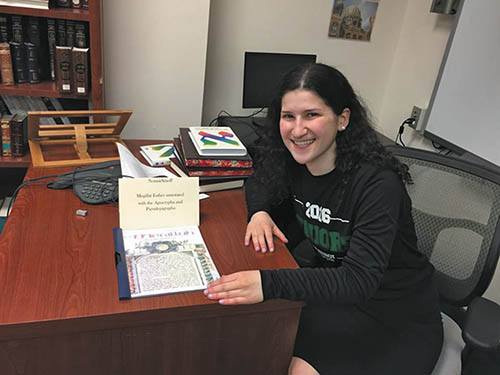


Ma’ayanot’s 80/20 Experiment
At the beginning of the 2014-15 school year, I noticed that my seniors had an advanced case of senioritis, the well-documented phenomenon with symptoms that include malaise, impatience with a set curriculum, and a sense that what is being learned has no application to one’s future. There is a particular frustration with taking notes and learning “just for the test.” I decided to try something different, something real-world, and hopefully something that they would find meaningful, enriching and invigorating.
This is the story of how my Tanach Google 80/20 Project came to be.
As the name implies, our Google 80/20 project is based on Google’s practice of allowing employees to utilize 20% of company time to pursue their individual passions and projects; the rationale is that these independent, passion-driven projects will both energize employees and yield practical benefits for the work they are doing for Google. I adapted this model for my senior Tanach classes by allocating one period out of seven per week for independent study. Similar to Google, my hope was that independent learning on topics chosen by the students would both energize the class and inform what we were accomplishing in the regular curriculum, in both content and skills.
A crucial aspect of this learning model is the production of meaningful presentations that showcase what the students have learned. As such, second semester began with presentation proposals, and ended with presentations through which students shared their work with their peers.
Finally, the culmination of our 80/20 project was a public exhibition for parents, teachers and students from other classes. The students were very proud and excited to publicly present their projects, as indeed they should be. The projects are excellent and will surely serve as foundations for public lectures, adult and children’s books, academic papers, educational material and beautiful art.
Below are descriptions of a sampling of the products of this successful experiment:
Nonnie Sinoff produced an English translation of Megillat Esther with the Apocryphal Additions inserted into the original text. Ms. Sinoff also wrote an introductory analysis of the additions explaining their source and significance.
Leah Stone, Sima Zand and Arielle Weinberger studied the Book of Job from the perspective of Job’s three friends: Eliphaz, Bildad and Tzophar. Throughout the year these students learned in chavruta to gain an understanding of these individuals through the lenses of Nachmonides, Maimonides, Rashi, Rav Sadia Gaon and the Artscroll commentary. At the conclusion of the learning, each student painted a portrait representing the attitude of one of the three friends.
Shana Adler chose to explore mitzvot that are found in Parshat Ki Teitzei, which includes perakim that had not been covered in prior Tanach classes.
In a project titled, “The Names Of Hashem and How The Traits They Express Are Consistent With The Text,” Aleeza Katz explored the various names of Hashem used in five pivotal stories in the Torah (Creation, Avraham and Sedom, Cheit HaEigel, the Meraglim and Korach’s rebellion) and discussed whether the thoughts and emotions expressed by the names are consistent with the events taking place in the surrounding text.
By Mrs. Leah Herzog, Tanach teacher and Co-Director of Israel Guidance at Ma’ayanot













